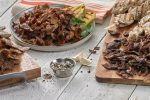Change, and Cheese
Posted by estiator at 13 April, at 19 : 28 PM Print
No one likes change. We’re creatures of habit, and, given our druthers, we will always elect to keep things as they are. After all, it’s much easier to do what you know and what you’ve been doing for years or even decades.
Yet change is one thing in life that is constant. And to sit back and let life pass you by without changing or adapting to environmental changes places one on a slow downward spiral that, put simply, will not end well.
One of my favorite business books, “Who Moved My Cheese” by Dr. Spencer Johnson, uses an interesting parable to convey how failure to recognize and adapt to change can destroy an organization. To quickly paraphrase, the book essentially says that when you put a piece of cheese in the same place in a maze every day, the mice will go to that place to find their cheese. When you move the cheese, two things can happen. Either the mouse will find the new location of the cheese and eat and prosper, or he will continue to go back to the same spot hoping that the cheese will come back or reappear. Of course the cheese will never return so in this scenario the mouse eventually dies of starvation.
Unfortunately, businesses frequently fall into that same mindset as the dead mouse. They refuse to acknowledge change and continue to operate as if change had never occurred and, as a result, they usually go out of business.
To illustrate, I visited a restaurant a few months back that was redoing its menu (let’s call it Joe’s Pizza). Great, I thought, here is a fantastic opportunity to address changes in eating habits, preferences, food trends and demographic shifts. Time to get rid of items that are stale and dated, and put on a few new items that tap into new markets. Time to update the concept, with the new menu as the vehicle for change. As I engaged the owner in conversation it became immediately clear that the intention was not to change the menu, but to put lipstick on the one he already had. “This menu has been here for thirty years,” he told me. “It’s the result of all of those years of being in business.” “Do you ever look at your product mix to understand what truly sells and what doesn’t?,” I asked. “No,” was the reply.
Why do you have so many sautee items on your menu? Do all of these sell?, I asked. “No,” was the reply, “but it’s the same ingredients so we don’t waste anything”, came the answer.
Excuses, I thought to myself. Well, you can have excuses or you can have success. You can never have both.
There’s no reason to continue to relay the rest of the conversation, the image is clear, I’m sure. And the fact that the restaurant does only a fraction of the business it once enjoyed will come as no surprise.
Conversely, I visited two other restaurants the week later. One, just a mile or two away from Joe’s Pizza, had been around even longer. Where Joe’s was an Italian pizza restaurant with a Greek twist, this was a traditional diner. As soon as I struck up conversation I noticed how happy the owner seemed. Where Joe was depressed and had a fatalist approach to the business, lamenting the fact that “it’s harder and harder to make money in this business,” the diner owner was upbeat and excited. Why? Because he finally listened to his son and allowed a major overhaul of the menu. Gone were the 12page spiral books. Gone was the mimeographed sheet of specials. Gone were the miles of food items that included everything from Eggs Benedict to Salisbury Steak.
In its place was a single fold twosided menu with a combination of classic diner favorites and a few other more progressive items (Turkey and Avocado Sandwich with Bacon, for example). The fonts were cool, the layout was artistic and the twocolor graphics were appealing.
“Since we changed the menu,” the owner told me, “our food cost has gone down, and our business has gone up. We gave up trying to be everything to everyone and focused on the items that our guests ordered the most, as well as items that provided us the best profit potential.”
So, you don’t have a filet mignon on the menu?, I teased. Aren’t you afraid that if a customer wants a filet and you don’t have it he’ll go to another restaurant?
“Well, then we have to let him go to that other restaurant,” was the reply. “This is what we are now, and our results prove that we made the right decisions.”
A half hour away I witnessed how another transformational change had a tremendous impact on another business. In this case, the business (also a diner) was already doing a great business. But, again, the entrance of the owner’s son into the picture brought with it a complete redesign and a complete change in concept, again, to spectacular results.
In this case, the menu wasn’t streamlined (it actually contained 22 pages!) but, rather, updated: New graphics, new logo, new format. More importantly, it also had new food items: in place of tired plates such as Chicken Cordon Blue and London Broil were items that spoke to contemporary palates. What was once a traditional Greek diner now had innovative food items such as Korean BBQ Pork Tacos, Crisp Rice Croquettes, Grilled Cheese with gruyere and pancetta, and a tilapia sandwich with avocado, bacon, watercress and roast corn tartar sauce. The place has a craft cocktail menu that rivals the best upscale restaurant in town and in place of a typical diner counter is a horseshoe bar with craft beers on tap. The interior of the entire place was redone in light panels, wood floors and wrought iron fixtures. No neon lights. No vinyl seats. No murals of the Acropolis. And with the changes came unprecedented success – Astronomical Success!
Returning to the parable, in the case of Joe’s Pizza, the owner refuses to acknowledge that the cheese has moved. People are not as attracted to the same tired veal dishes as they once were. And in the case of the first diner, the owner understood the need to change his menu to escape from a downward spiral his unprofitable menu had him pinned to. He not only made changes to protect his food cost, but he paired it with a menu presentation and modest interior changes to highlight the core concept. In the final case, the operator had chosen to not only find a fresh source of cheese, but to go after the more expensive, fancier cheese that his competitors had been nibbling on for years.
Related Posts
-

23 February at 11 : 27 AM 0
Grecian Delight | Kronos Foods launch integrated website
-

22 May at 13 : 55 PM 0
Θλίψη για τον θάνατο του επιχειρηματία, ευεργέτη και αγωνιστή Ευριπίδη Κόντου
















